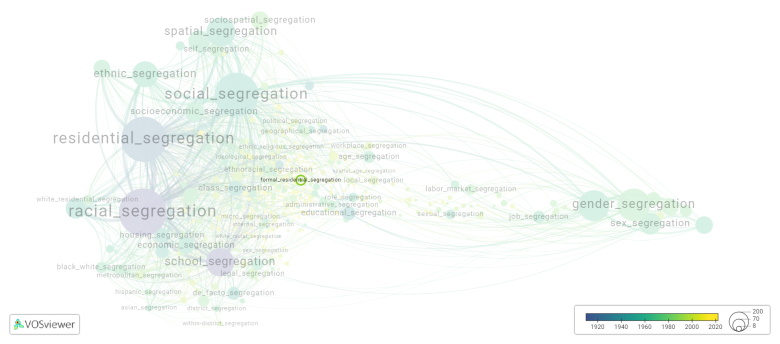Formal residential segregation: Difference between revisions
(Creating page) |
(Creating page) |
||
| (3 intermediate revisions by the same user not shown) | |||
| Line 6: | Line 6: | ||
Formal residential segregation refers to the enforced separation of different racial or ethnic groups into distinct residential areas through laws, policies, or practices. This may involve the creation of segregated neighborhoods, the restriction of housing options for certain groups, or the establishment of discriminatory practices in housing markets. Formal residential segregation can have long-lasting impacts on social and economic disparities between different groups and can perpetuate systemic inequalities. | Formal residential segregation refers to the enforced separation of different racial or ethnic groups into distinct residential areas through laws, policies, or practices. This may involve the creation of segregated neighborhoods, the restriction of housing options for certain groups, or the establishment of discriminatory practices in housing markets. Formal residential segregation can have long-lasting impacts on social and economic disparities between different groups and can perpetuate systemic inequalities. | ||
==See also== | ==See also== | ||
==Related segregation forms== | |||
Formal residential segregation is frequently discussed in the literature with the following segregation forms: | |||
[[social segregation]] | |||
[[File:formal_residential_segregation.png|780x780px]] | |||
This visualization is based on the study [[Segregation_Wiki:About| The Multidisciplinary Landscape of Segregation Research]]. | |||
For the complete network of interrelated segregation forms, please refer to: | |||
* [https://tinyurl.com/2235lkhw First year of publication] | |||
* [https://tinyurl.com/2d8wg5n3 Louvain clusters] | |||
* [https://tinyurl.com/223udk5r Betweenness centrality] | |||
* [https://tinyurl.com/244d8unz Disciplines in which segregation forms first emerged (Scopus database).] | |||
==References== | ==References== | ||
==Notes== | ==Notes== | ||
Latest revision as of 07:17, 16 October 2024
Date and country of first publication[1][edit | edit source]
2001
United States
Definition[edit | edit source]
Formal residential segregation refers to the enforced separation of different racial or ethnic groups into distinct residential areas through laws, policies, or practices. This may involve the creation of segregated neighborhoods, the restriction of housing options for certain groups, or the establishment of discriminatory practices in housing markets. Formal residential segregation can have long-lasting impacts on social and economic disparities between different groups and can perpetuate systemic inequalities.
See also[edit | edit source]
Related segregation forms[edit | edit source]
Formal residential segregation is frequently discussed in the literature with the following segregation forms:
This visualization is based on the study The Multidisciplinary Landscape of Segregation Research.
For the complete network of interrelated segregation forms, please refer to:
References[edit | edit source]
Notes[edit | edit source]
- ↑ Date and country of first publication as informed by the Scopus database (December 2023).
At its current state, this definition has been generated by a Large Language Model (LLM) so far without review by an independent researcher or a member of the curating team of segregation experts that keep the Segregation Wiki online. While we strive for accuracy, we cannot guarantee its reliability, completeness and timeliness. Please use this content with caution and verify information as needed. Also, feel free to improve on the definition as you see fit, including the use of references and other informational resources. We value your input in enhancing the quality and accuracy of the definitions of segregation forms collectively offered in the Segregation Wiki ©.
Formal residential segregation appears in the following literature[edit | edit source]
Popke E.J. (2001). Modernity's abject space: The rise and fall of Durban's Cato Manor. Environment and Planning A, 33(4), 737-752. Pion Limited.https://doi.org/10.1068/a32175
Bigon L. (2007). Tracking ethno cultural differences: the Lagos steam tramway, 1902 1933. Journal of Historical Geography, 33(3), 596-618. https://doi.org/10.1016/j.jhg.2006.07.002
Lewis R., Harris R. (2013). Segregation and the social relations of place, Bombay, 1890 1910. South Asia: Journal of South Asia Studies, 36(4), 589-607. https://doi.org/10.1080/00856401.2013.835781

